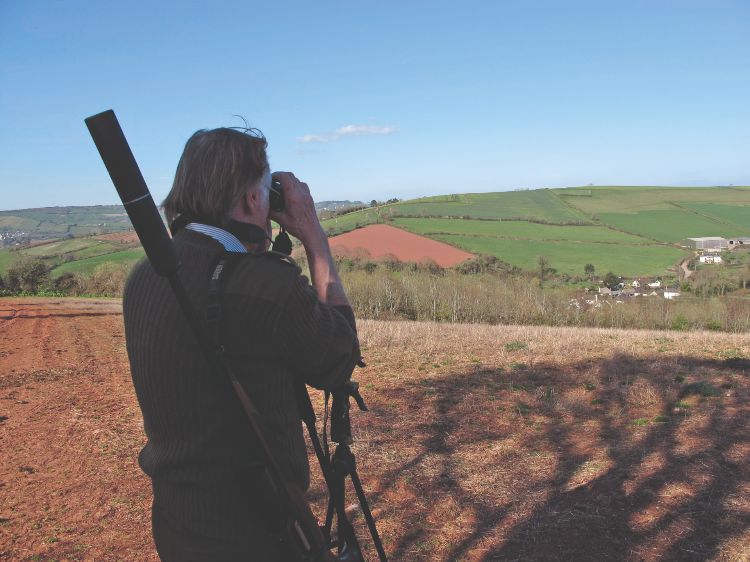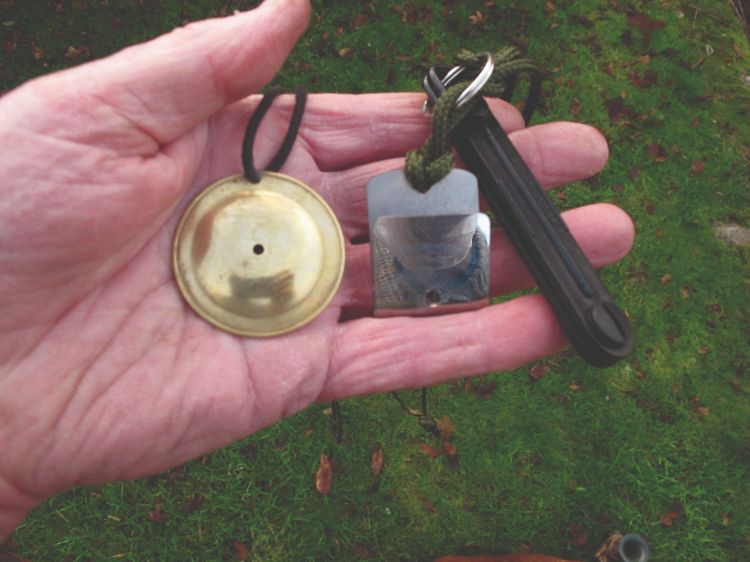Having spent seven decades calling foxes, Mike Powell’s knowledge is second to none – but even he’ll admit that sometimes foxes break the rules!
If there is one aspect of fox shooting that intrigues me almost more than anything else it’s the dark art of calling! More questions crop up on a regular basis in magazines and on line about how best to go about luring foxes in to within range than almost any other, apart perhaps from the evergreen query on what is the best calibre to shoot them with!
I have said many times before that I’ve always looked upon calling foxes as an imprecise science so in this article I will try to explain how I go about calling foxes and will try to pass on what I’ve learned over the past 70 years that I’ve been doing it myself, at times with some success and at others with no success whatsoever!
When I started out as a lad, I knew nothing whatsoever about the ways of the fox, and certainly until I was drawn into catching and shooting them as a way of earning a living because their skins were, in those far off days, a very profitable commodity, calling them was completely unknown to me.
As is often the case where trapping and shooting is concerned, our transatlantic cousins are way ahead of us (I exclude game shooters from that statement) and reading the shooting magazines sent to me by an uncle in Canada who was not only in the Royal Mounted Police (The Mounties) but was an enthusiastic trapper and shooter of furbearing animals, I learned that over there calling in of predator species worked extremely well.
Shooting back in those days for most of us was a pretty solitary affair and with extremely limited connections with other shooters we had to learn by our own mistakes - of which there were plenty! However, I did start hand calling and to my surprise it did work after a fashion. I also found that the whistle that could be produced from the wheel of an old Hornby Dublo model railway carriage could also outfox the fox on occasions, perhaps one of the earliest forms of the well-known Wam-type caller?
Eventually, mouth blown calls started appearing in this country both from America and a bit later Australia. Unfortunately, quite a few of these were not specifically aimed at foxes as in America in particular there were far more fur bearing predators than here and what works on a coyote or bobcat doesn’t necessarily have the same allure to an English fox.
 Why isn't my fox call working?
Why isn't my fox call working?
Time passed and by the tried and tested method of trial and error I gradually got more proficient at hand calling foxes in to within range of my 12-bore, but even then results were sporadic and as is the case today, what works well on one night has little or no effect on another. Over the years, I’ve tried to get to the bottom of this, but the basic fact is that there are countless reasons why a wild creature who is driven by instincts and abilities that we can only guess at, won’t react to what we assume is an irresistible sound produced by a hand or as is in the case today an electronic caller.
There are of course quite a few obvious reasons that can affect their response to our attempts at reproducing the sound of nature for example. Should the fox have had a successful hunt and has fed well it’s response to a prey call will be limited.
Also, what exactly is the fox hearing? They are not stupid creatures and survive by recognising sounds and smells, so are the sounds we are producing exactly replicating what they are listening for? There are possibly two exceptions to this: the first is if a fox is really hungry they may throw caution to the wind and come in to almost any call we produce. The second exception is cubs out hunting for the first time that haven’t quite got the hang of what is genuine and what isn’t in the confusing world they have begun to explore.
Another reason for foxes showing total disinterest, reluctance or extreme wariness is that they know for a fact or suspect there is danger. Foxes senses are incredibly efficient, as is shown by the fact that they survive remarkably well despite so many hazards in the modern world. I watch foxes via cameras on a nightly basis and with a couple of exceptions they approach bait even after using the bait point for weeks, with extreme caution. It’s rare to see one walk straight up to the bait and this wariness extends to most of how the majority of them spend their lives.
I have no concrete evidence to prove it but where ‘mechanical’ calls are concerned I suspect that many foxes with their highly developed sense of hearing can detect that all is not as it should be. I base this on what I’ve noticed very many times when out waiting for fox or rabbit. We have a fair number of stoats and weasels round here and when they run down a rabbit it will eventually give up and often just sit and squeal and wait for the inevitable. Now should there be a fox in the vicinity it is virtually guaranteed it will make a bee-line for the squealing rabbit and head in with little or no hesitation. This has happened to me when I’ve been using rabbit screams on a digital caller that have been totally ignored.
On another occasion I had a very good caller set out 60 odd yards in front of my hide and a fox came across the field and walked within no more than a metre from it and totally ignored what I considered utterly realistic rabbit screams coming from it. So little notice did it show that I suspected it was deaf, however a small hand-produced squeak stopped it in its tracks - suggesting that a mouth- or hand-produced sound could be more natural than a recorded sound pushed through a speaker. Just a thought!
 How and when to call foxes in
How and when to call foxes in
So how do I set about calling them in? I have an ICOtec caller that has brought many in over the years but more often than not I just use my hand or one of the very good mouth-blown callers from Best Fox Call. The one I’ve found works best is their Tenterfield-type orange plastic one; this has a slightly rasping tone that very closely mimics a rabbit and seems to get better results than the stainless steel one.
Another factor is how you actually use the call. Having spent the best part of my life out in the countryside I have yet to hear a live rabbit squealing for prolonged periods, it just doesn’t happen, so for a long time I’ve used distress calls sparingly and had better results by doing so.
Likewise, keep the volume down similar to that of a real rabbit. Foxes’ hearing is incredible and since the advent of thermal night vision equipment I’ve found by trial and error that foxes will easily pick up a squeal from anything up to 400 yards away and pinpoint its location to within a very small area – any closer and they’ll know exactly where it comes from.
When using mating calls, again don’t overdo it! Listen to foxes in the real world and try to mimic what they do rather than blast out sounds endlessly. Little and not too often is a good path to follow.
Finally, apart from whatever calls you may use remember you the human is what can alert foxes to danger more than anything else. When out waiting, keep movement to a minimum; this is even more important in my opinion than wind direction, as these days human scent is everywhere. When I started out all those years ago it was very rare for people to be out and about after dark and foxes certainly were very wary of us, but in most areas this is no longer the case.
Today, there are very few people who can regularly call foxes in. I’ve been doing it for a very long time and still have nights without any success at all and wonder if I know much about it after all. Personally, I think this is good, as I would hate to think that the day would come when a call was produced that worked every time. The fox is a worthy quarry and in most cases deserves a fair chance. However, sometimes on a miserable, cold winter night when out after a poultry or pheasant killer I may think otherwise!